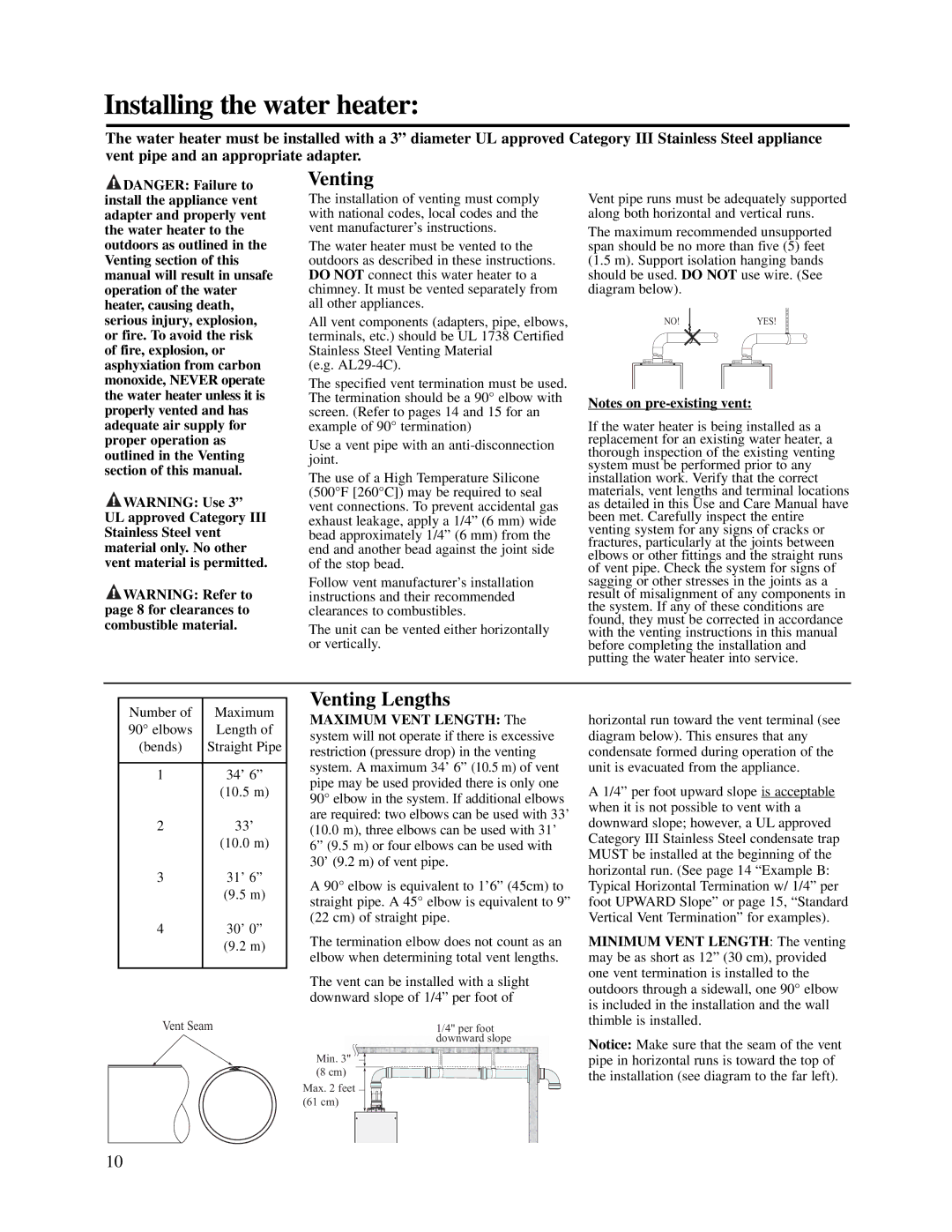RUTG2-42(PVN)(PVP), RUTG2-53-(PVN)(PVP)(XN)(XP), RTG2-53-(PVN)(PVP)(XN)(XP), PH-16(FISN)(FISP), RMTG2-53-(PVN)(PVP)(XN)(XP) specifications
Rheem’s innovative line of tankless water heaters, including the PTG2-42(PVN)(PVP), RTG2-42(PVN)(PVP), PH20R-(IFSN)(IFSP)(OFN)(OFP), RMTG2-42(PVN)(PVP), and RMTG2-53-(PVN)(PVP)(XN)(XP), represents a significant advancement in residential and commercial water heating technologies. These models are designed to deliver hot water on demand, ensuring efficiency and convenience while minimizing energy consumption.One of the standout features of these Rheem models is their energy efficiency. Employing advanced condensing technology, they are capable of converting up to 98% of the energy consumed into hot water. This impressive efficiency reduces utility bills and makes them an environmentally friendly choice compared to traditional tank water heaters.
The PTG2 and RTG2 series are particularly versatile, accommodating various installation needs. Their compact design allows for both indoor and outdoor installation, making them ideal for homes with limited space. Additionally, they are equipped with a multiple venting option, which provides flexibility in installation locations.
The PH20R series incorporates Rheem’s proprietary modeling and simulation technologies to optimize performance. These models feature enhanced safety functions and user-friendly digital controls, allowing homeowners to easily set and monitor their water temperatures. The ease of use extends to maintenance as well, as many components are accessible for routine checks and cleaning.
Another significant advantage of the RMTG2 models is their integrated Wi-Fi connectivity, enabling users to manage their water heating systems remotely through Rheem’s mobile app. This smart technology provides real-time data, alerts, and allows for temperature adjustments, ensuring that users always have hot water when they need it.
Rheem’s tankless water heaters also boast a robust warranty, a testament to their durability and reliability. With options that cater to various household sizes and hot water needs, these models can provide continuous hot water for homes with multiple bathrooms and heavy consumption.
For those seeking cost-effective, efficient, and smart water heating solutions, the Rheem PTG2, RTG2, PH20R, RMTG2-42, and RMTG2-53 series stand out as top contenders in the market. Their combination of advanced technology, energy savings, and user-friendly features position them as industry leaders, providing long-term benefits for any homeowner.

